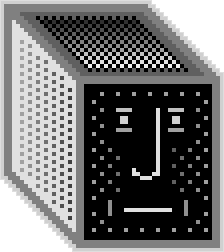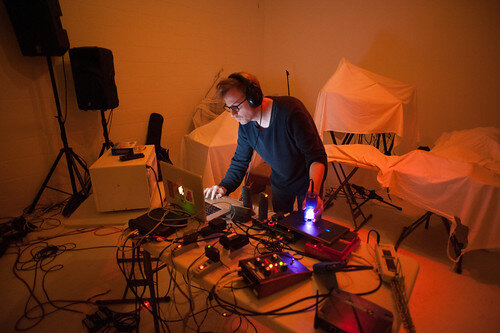Anti-Wave
My most recent project involving radio and transmission art entitled Anti-Wave examines the silent electromagnetic transmissions that are ubiquitous today (Wi-Fi, Bluetooth, cell phone tower emissions, microwaves). I receive these inaudible frequencies with devices that recognize them not as information (conversations, emails, streaming), but as something similar to the unwanted sounds that were heard in early radio reception (static, whistles, sferics). In receiving and translating these frequencies into audible sounds, I am interested in the process of dissecting the wireless devices that embody our lives, and exposing the relationships between people and the objects that inhabit their daily rituals.
Anti-Wave performances:
Wave Farm - Acra, NY
Kunstradio - Vienna
Ars Electronica - Linz
LOM Studios - Bratislava
BB15 - Linz
Big Joy - Vancouver
MOVEMENT RADIO BROADCAST 2020
In this episode Afroditi Psarra invites Vancouver based artist and educator Kristen Roos. The mix he has prepared explores three of his projects that span 16 years of working with radio transmission and transmission art: The Micro Radio Project, Electrosmog, and Anti-Wave.
Electrosmog
Electrosmog examine the silent electromagnetic transmissions that are ubiquitous today. In receiving and translating these frequencies into audible sounds, I am interested in the process of dissecting the wireless devices that embody our lives, and exposing the relationships between people and the objects that inhabit their daily rituals.
Microwaves, a wireless router, cordless phones are used as sources for electromagnetic frequencies that are made audible through several radio frequency and electromagnetic receivers.
Electrosmog performances:
Studio Loos, The Hague
Interpenetration Series, Graz
Radius, Chicago
Radio Revolten, Halle
The micro radio project started as a site-specific sound and radio project. This involved collecting sounds from a given area, and using these sounds in compositions that were broadcast within the sites that they had been collected. The sounds were stored on my laptop and broadcast using a low-power radio transmitter.
The project evolved into a mobile performance which mixed prerecorded field recordings that I had stored on cassette, one off lacquer records, and my laptop. The performance is amplified through broadcasting to radios, the sound system at the venue, and tactile transducers attached to surfaces in the space. Using records, cassettes, and a radio transmitter to perform live sound collage makes nod to the history of the phonograph, tape and radio as tools for the development of experimental sound art. Giving an alternative use for mediums that are largely used for commercial media is also a Situationist technique—detournement, in which a familiar medium is repurposed to create something new.
Below is an example of one of the early live performance/broadcasts:
The Acoustic Commons (2005/2007)
This audio collage metaphorically examines the issues explored at the Commons Conference: the commons and privatization and reaches an audience at the very site that the audio was originally recorded (Victoria BC); this is an important location for the transmission of this work. In micro broadcasting this site-specific sound collage, I am using radio as a metaphor for the enclosure of the land, by temporarily creating a space on the airwaves that is an aural “commons” of sorts.
The speakers that appear in this peice were originally recorded at the conference "The Wars at Home, the Wars Abroad, Imperialism and the everyday" at the University of Victoria in 2005 - and appear chronologically - Chief Kim Recalma-Clutesi of the Qualicum Band, Richard Day, and Arthur Manuel.
micro broadcast at - Interactive Futures and The Commons Conference.










